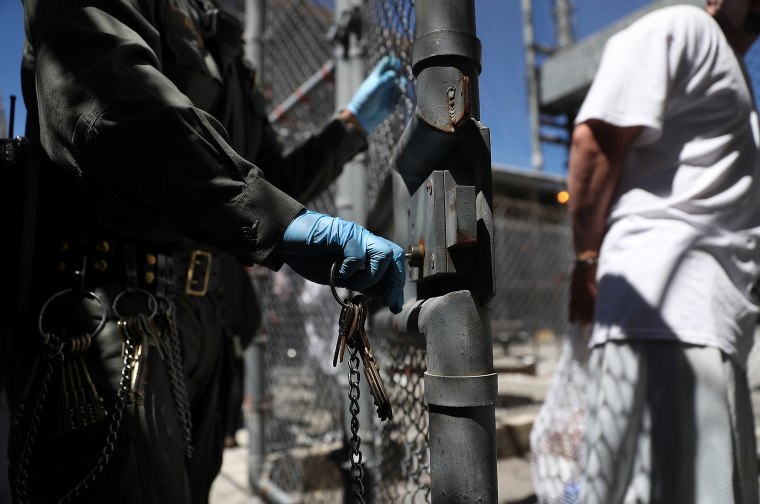WASHINGTON — The number of people serving prison or jail sentences in the United States dropped 10 percent over the decade ending in 2017, the Department of Justice said Thursday, the latest evidence that a lower crime rate and changing sentencing policies are having an effect on the number of people behind bars.
After decades of increases, the latest figures show that the incarceration rate — the number of prisoners compared to the U.S. population — is at the lowest level in 20 years, according to the Bureau of Justice Statistics.
From 2007 to 2017, incarceration rates in state and federal prisons and local jails dropped by more than 10 percent. And the population of prisoners serving a sentence of more than a year declined for the fourth year in a row, the BJS data showed.
Despite claims by the Trump administration that undocumented immigrants commit a disproportionate number of crimes, "noncitizens made up roughly the same portion of the U.S. prison population, 7.6 percent, as of the total U.S. population," the BJS said.
Criminologist James Alan Fox of Northeastern University said the main reason for the drop in inmate populations is the falling crime rate. He noted that during the decade that ended in 2017, violent crime was down 19 percent.
Marc Mauer of the Sentencing Project, a group that advocates for changes in sentencing policy, said the drop in the incarceration rate in federal prisons is partly the result of a change in sentencing guidelines for drug offenses. Among states, he said, drives to cut down on prison overcrowding, including court-ordered reductions, were a factor, as well as a drop in serious crimes.
Mauer called the declines encouraging but said they "still fall far short of what is necessary to end mass incarceration anytime soon." He said the U.S. locks up people at five to 10 times the rate of other industrialized countries.

